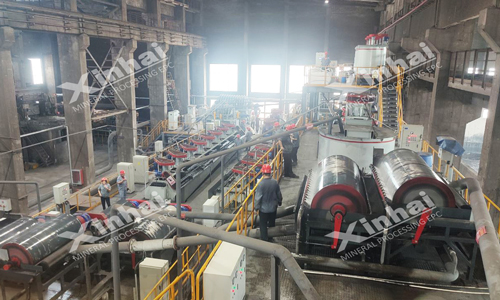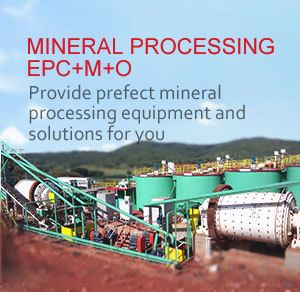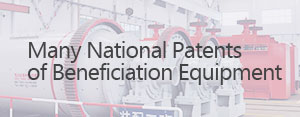Magnetic Separation in Iron Ore Beneficiation
2025-07-17 XinHai Views (9)1.Magnetic Separation in Iron Ore Beneficiation Introduction
Magnetic separation is essential for upgrading iron ore and removing impurities in mineral processing, hydrometallurgy, and water treatment
2.Magnetic Separation in Iron Ore Beneficiation Core Principles
Minerals respond differently to non-uniform magnetic fields—ranging from weak (0.1 T) to high-gradient strong (up to 2 T)—making segregation possible by magnetic susceptibility . Wet separation is used for fine particles, dry for coarse.
3. Magnetic Separation in Iron Ore Beneficiation Equipment & Layout
Drum/cylinder separators: ideal for strong-field magnetite recovery.
High-Gradient Magnetic Separators (HGMS): target fine, weakly magnetic minerals like hematite .
Support systems: crushers, classifiers, jigs, flotation cells.

4. Magnetic Separation in Iron Ore Beneficiation Ore-Specific Strategies
Magnetite-rich ores: Apply weak-field separation at coarse feed sizes; follow-ups at finer scales .
Hematite/weak ores: Use strong-field HGMS; often coupled with flotation to achieve high-grade concentrates .
Low-grade, disseminated (e.g., Wadi Halfa): Grind to ~150 µm → rough gravity + weak separation → clean with HGMS → achieve ~64% Fe at ~70% recovery
5.Magnetic Separation in Iron Ore Beneficiation Design & Process Controls
Grinding: Achieving proper liberation (e.g., ~150 µm).
Magnetic parameters: Optimize field strength, gradient, drum speed, feed rate
Pre-treatment: Magnetization roasting enhances hematite’s magnetic response
6. Magnetic Separation in Iron Ore Beneficiation Performance Metrics & Case Evidence
Wadi Halfa: 64% Fe concentrate, 70% recovery.
Xinhai plants: Gravity + multi-stage magnetic yields 60–63% concentrates with 70–85% recovery
7. Magnetic Separation in Iron Ore Beneficiation Optimization & Integration
Challenges include fine particles, complex gangue, and weak-magnetism. Efficient solutions include staged separation, enhanced field strength, and integrating flotation/gravity
8. Environmental & Industrial Applications
HGMS methods are effective for removing iron impurities from hydrometallurgical streams and wastewater, aiding sustainable mining
Chrome Ore Beneficiation Solutions from Xinhai – Efficient, Eco-Friendly, and Customized
... [more]
No Next
Related Article
- Iron Processing Methods: A Comprehensive Guide
- Iron Ore Mining Process: A Comprehensive Guide to Ore Beneficiation
- Iron Ore Tailings Re-Processing Technology
- Xinhai Mining EPC Held The 2020 Safety Summary Meeting
- Mineral Processing Test and Study on Iron in Laizhou
- Mineral Processing Test and Study on Iron Ore in Philippines
- 500,000t/a Iron Concentrate Powder Processing EPC Project In Mongolia
- Assistant instruments in mineral processing
- The Prosperity of Iron Processing Equipment Markets
- Chrome Ore Beneficiation Solutions from Xinhai – Efficient, Eco-Friendly, and Customized








